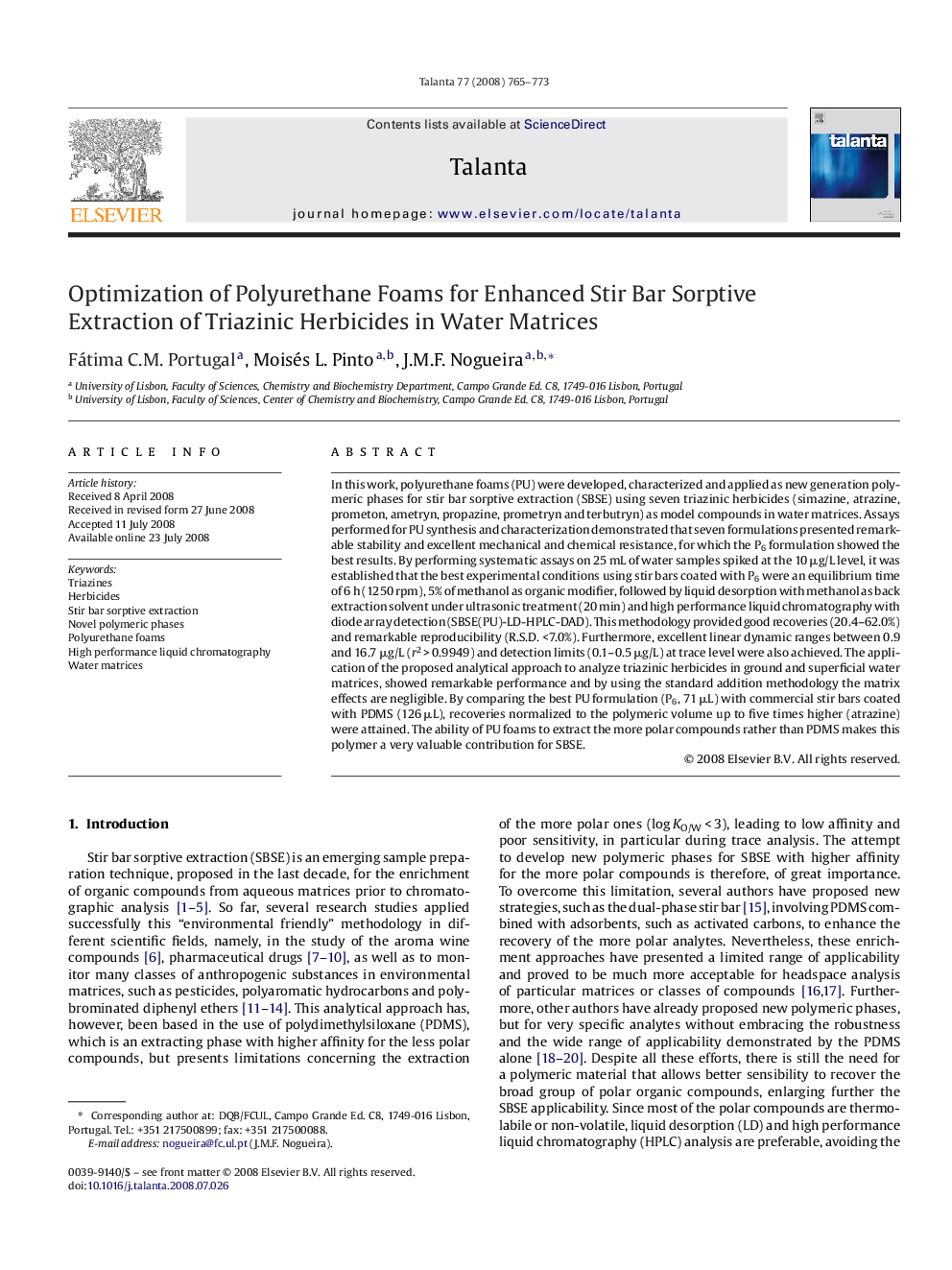| Article ID | Journal | Published Year | Pages | File Type |
|---|---|---|---|---|
| 1243133 | Talanta | 2008 | 9 Pages |
In this work, polyurethane foams (PU) were developed, characterized and applied as new generation polymeric phases for stir bar sorptive extraction (SBSE) using seven triazinic herbicides (simazine, atrazine, prometon, ametryn, propazine, prometryn and terbutryn) as model compounds in water matrices. Assays performed for PU synthesis and characterization demonstrated that seven formulations presented remarkable stability and excellent mechanical and chemical resistance, for which the P6 formulation showed the best results. By performing systematic assays on 25 mL of water samples spiked at the 10 μg/L level, it was established that the best experimental conditions using stir bars coated with P6 were an equilibrium time of 6 h (1250 rpm), 5% of methanol as organic modifier, followed by liquid desorption with methanol as back extraction solvent under ultrasonic treatment (20 min) and high performance liquid chromatography with diode array detection (SBSE(PU)-LD-HPLC-DAD). This methodology provided good recoveries (20.4–62.0%) and remarkable reproducibility (R.S.D. <7.0%). Furthermore, excellent linear dynamic ranges between 0.9 and 16.7 μg/L (r2 > 0.9949) and detection limits (0.1–0.5 μg/L) at trace level were also achieved. The application of the proposed analytical approach to analyze triazinic herbicides in ground and superficial water matrices, showed remarkable performance and by using the standard addition methodology the matrix effects are negligible. By comparing the best PU formulation (P6, 71 μL) with commercial stir bars coated with PDMS (126 μL), recoveries normalized to the polymeric volume up to five times higher (atrazine) were attained. The ability of PU foams to extract the more polar compounds rather than PDMS makes this polymer a very valuable contribution for SBSE.
